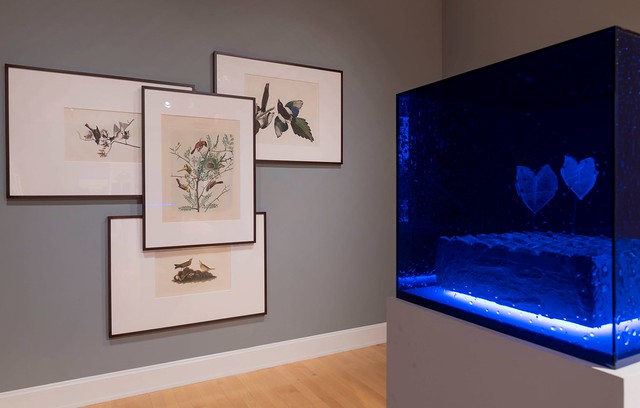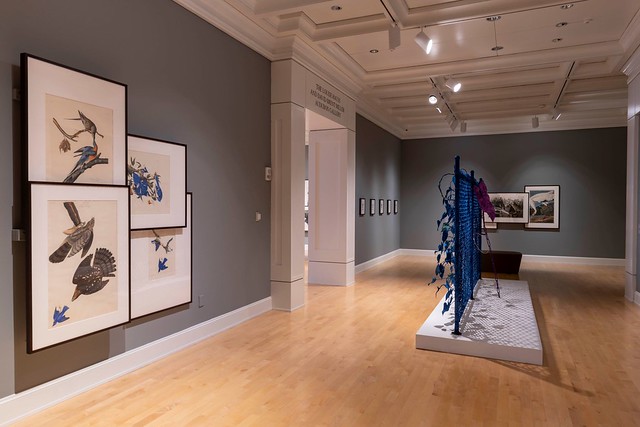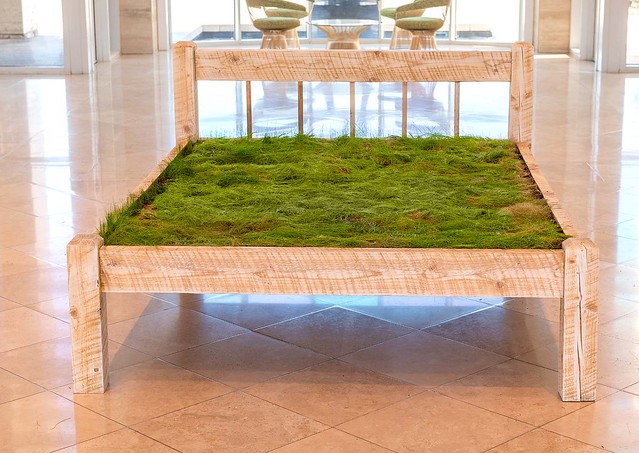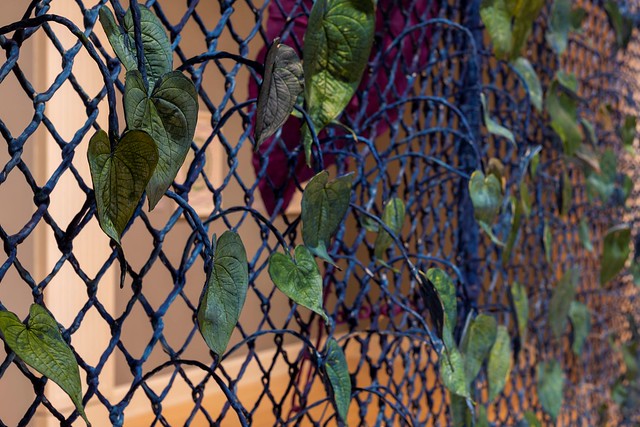Audubon explored through radical naturalism at Auburn University’s museum
Article body
The first in an emerging series, “Radical Naturalism–Tommy Coleman: A New Nature and my problem with the vessel,” currently is on view at the Jule Collins Smith Museum of Fine Art at Auburn University through Sunday, July 26.
The inaugural exhibition features new drawings and sculptures by Coleman and a sculptural configuration of 16 Audubon etchings. Auburn’s Louise Hauss and David Brent Miller Audubon Collection includes 120 prints from the Double Elephant Folio publication “Birds of America” and the three-volume set of the “Vivaporous Quadrupeds of North America.”
Through “Radical Naturalism,” the museum invites contemporary artists inspired by the natural world to research the university’s Audubon collection and others across campus to engage with, question and critique John James Audubon’s evolving legacy. The 19th-century artist dedicated his life to hunting and trapping North American specimens, documenting the species of birds, insects and plants that he encountered.
Centuries removed from Audubon, Coleman, a Florida-born interdisciplinary artist, observes and depicts the complex relationships between plants, animals and humankind in the wetlands of his home state, considering the fragile environment and pushing the understanding of native and invasive.
“What happens when something or someone, once considered invasive becomes native, or vice versa?” said Aaron Levi Garvey, the Janet L. Nolan Director of Curatorial Affairs at the museum. “These meanings can be ecological, physiological or social: a weed in your garden, elephant ears taking over a fence, unwanted thoughts—even unannounced visitors.”
Through Coleman’s investigation, he examined how Audubon could be considered invasive both as an artist and individual.
“While John James Audubon produced scientific renderings of nature as an ideal, he often left out the nitty-gritty details of his process, personal misgivings and ill behaviors,” Coleman said.
“Audubon’s prints, while impeccable specimens of intaglio printing and hand-coloring, are also specimens of histories and sciences that are no longer valid or accurate. What interests me most in these prints are the ‘incorrect’ moments, the histories we’ve left behind and the moments where we have the opportunity of seeing the handiwork of a “naturalist-artist” become moments of sincere artistic decision-making.”
Coleman said his contribution to the show gathers several bodies of work spanning 15 years. “Seed Bed,” a full-size spruce bedframe complete with fragrant ryegrass and a soil mattress, is an interactive object. Museum visitors are invited to lay or sit on the bed, creating an experience reminiscent of venturing outside and observing clouds.
Additional works include soundscapes produced by Coleman and Baltimore musician Austin Bey, creating an experience of two opposing native and invasive fauna. Garvey said the Audubon works are installed as sculptural assemblages instead of scientific illustrations, encouraging visitors to reconsider the content, meanings and story presented.
“I want viewers to slow down; I want people to spend more time in this space to be able to see [Audubon’s] works as vehicles for metaphor and self-reflection,” Coleman added. “How have we taken part in affecting this nature, for better or for worse?”
Coleman is scheduled for a campus visit at 6 p.m. CT on Thursday, March 24, in the museum auditorium, where he will join Garvey in conversation. The in-person program also will be streamed on Facebook and YouTube, @thejulemuseum, with Coleman and Garvey appearing on an upcoming episode of The Jule Museum Podcast with Auburn faculty. A virtual gallery tour also is available on the museum’s website.
“Radical Naturalism” continues through the 2022-23 academic years, with other contemporary artists selected to guest curate and debut work. A future installment of “Radical Naturalism” will highlight Manon Bellet, whose research and practice center on extracting scents from historic areas affected by coastal erosion.
Celebrating its 20th anniversary of arts and engagement in 2023, the Jule Collins Smith Museum of Fine Art is located on Auburn University’s campus at 901 S. College St. Collection strengths include mid-20th century American modernism, Mexican modernism, contemporary prints and photographs, works on paper depicting the South, ceramics and Southern visionary art.
Admission to the museum is free, and donations are welcomed. For more information, visit jcsm.auburn.edu.
Related Media
Media interested in this story can contact Communications Director Preston Sparks at (334) 844-9999 or preston.sparks@auburn.edu.
Auburn University is a nationally ranked land grant institution recognized for its commitment to world-class scholarship, interdisciplinary research with an elite, top-tier Carnegie R1 classification, life-changing outreach with Carnegie’s Community Engagement designation and an undergraduate education experience second to none. Auburn is home to more than 30,000 students, and its faculty and research partners collaborate to develop and deliver meaningful scholarship, science and technology-based advancements that meet pressing regional, national and global needs. Auburn’s commitment to active student engagement, professional success and public/private partnership drives a growing reputation for outreach and extension that delivers broad economic, health and societal impact.








